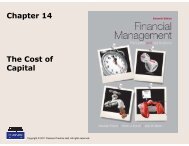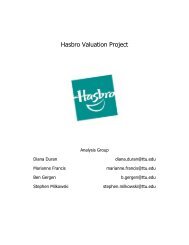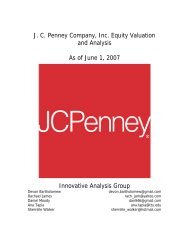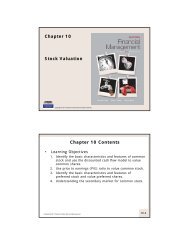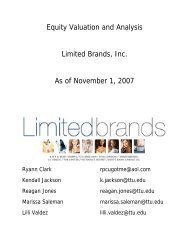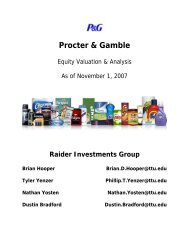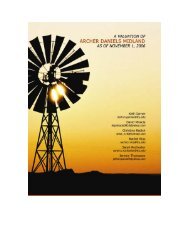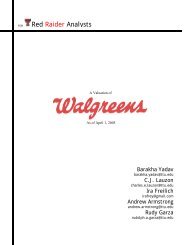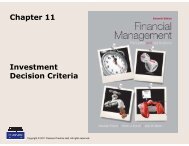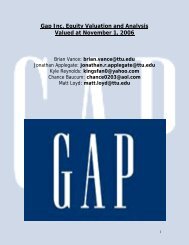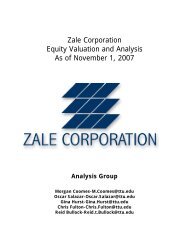You also want an ePaper? Increase the reach of your titles
YUMPU automatically turns print PDFs into web optimized ePapers that Google loves.
Once the industry analysis had been observed, an accounting analysis took place allowing anoverview of the firm’s truthfulness in its financial statements. From the analysis it wasunderstood that the impairment of research and development would need to be capitalized andrestated. By capitalizing research and development, more accurate expense and revenue levelscan be documented, as well as restated net income levels. After conducting the tests forimpairment of goodwill, it was concluded that it would not need to be restated.From the financial analysis we were able to establish levels of liquidity, profitability, andcapital structure for Schweitzer-Mauduit, its competitors, and the industry. By establishing salesand expense manipulation ratios, as well as liquidity and profitability ratios, we were able todetermine that Schweitzer-Mauduit does not exceed nor fall behind its competitors in theindustry. From the analysis it is shown that Schweitzer-Mauduit did not manipulate its financialstatements to depict more favorable financial positions. Research and development did have tobe restated; however it did not make any major impacts on the financial statements. Goodwilldid not need to be restated as it did not represent a large enough portion of total assets.Additionally in the financial analysis, we were able to forecast future expectations for the firm.By analyzing the industry and historical evidence from the firm we were able to establishgrowth rates. These rates and previously discovered ratios allowed us to forecast the incomestatement, balance sheet, and the statement of cash flows. When forecasting the incomestatement, sales dropped by two percent in 2009 in response to the recent recession sweepingthe country. In 2010 sales recovered and returned to a six percent growth rate and began tolevel off following 2010.In order to forecast the balance sheet, the asset turnover ratio was computed to be 1.0.Other ratios used to forecast the balance sheet were the accounts receivable ratio computed tobe 8.9, inventory turnover calculated at 5.8 and the plant property and equipment turnoverratio at 1.9. The statement of cash flows was forecasted using logically computed growth ratesof cash flow from financing activities, cash flow from net income, and cash flow fromoperations.A regression analysis was performed in order to derive a beta and cost of capital forSchweitzer-Mauduit. The beta with the highest adjusted r squared was 1.49, which onlyexplains 34.04% of the overall risk of the firm. The beta of 1.49 is put into the CAPM equationto determine the cost of equity. Our results from the CAPM show the cost of equity to be183




